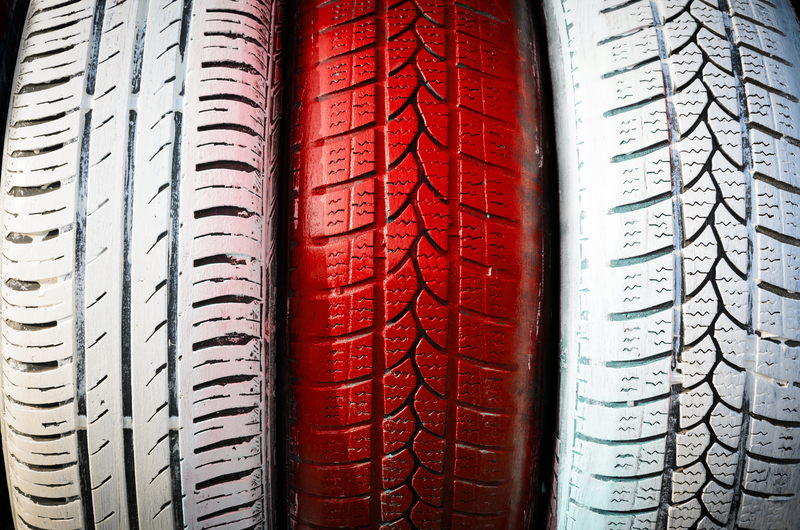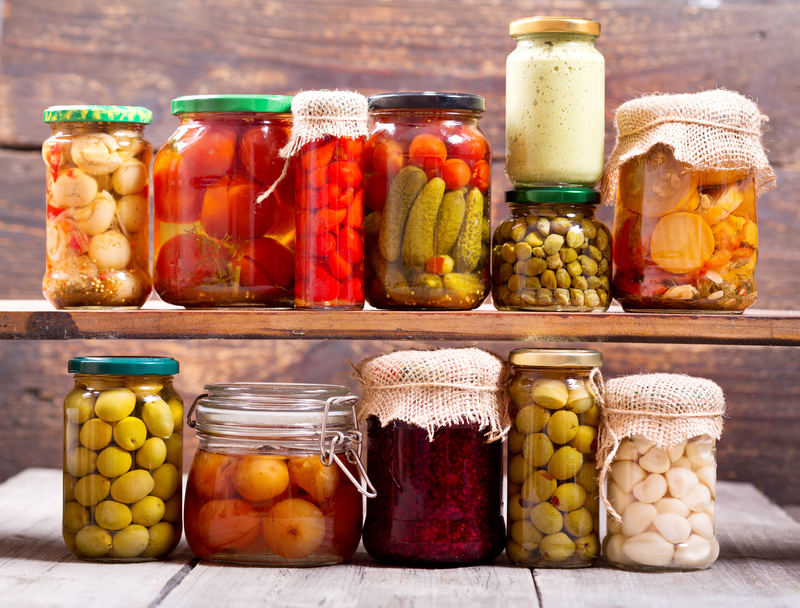Innovative Packaging Disposal Practices: A Comprehensive Guide for Sustainable Waste Management
Packaging waste has become a significant global concern as more goods are shipped and consumed than ever before. Modern society's reliance on packaging, from food wrappers to shipping boxes, creates mountains of waste that strain our planet's resources and landfill capacity. In response, innovative packaging disposal practices are emerging, addressing both environmental impact and consumer responsibility. This guide explores the latest trends, technologies, and actionable steps for better packaging disposal.
Why Rethinking Packaging Disposal Is Critical
The sheer volume of packaging waste is staggering. Estimates suggest that over 300 million tons of plastic are produced annually, much of it for single-use packaging. Improper disposal leads to pollution, wildlife harm, and contributes to climate change.
- Eco-friendly packaging disposal reduces landfill waste
- It mitigates the leaching of toxins into soil and water
- Enables circular economy models through recycling and reuse
- Ensures cleaner urban and natural environments
Innovative packaging disposal solutions are urgently needed as traditional practices like landfilling and incineration prove unsustainable.

Advanced Packaging Waste Management Strategies
1. Smart Packaging Design for Easy Disposal
Forward-thinking brands are adopting innovative packaging disposal principles right from the design stage. These designs emphasize:
- Material minimization to reduce waste at the source
- Mono-material packaging that is easier to recycle
- Elimination of unnecessary plastic wraps and layers
- Clear labeling to assist with proper sorting
A growing trend is designing packaging for disassembly, allowing consumers to easily separate components and dispose of them correctly. Eco-design is now at the forefront of sustainable packaging solutions.
2. Compostable and Biodegradable Packaging Solutions
Compostable packaging offers an alternative to traditional plastics, breaking down into organic matter without harming the environment. Notable materials include:
- PLA (Polylactic Acid) derived from corn starch or sugarcane
- PHA (Polyhydroxyalkanoates), produced by microbes
- Bagasse (sugarcane fiber) and bamboo pulp
Proper disposal of compostable packaging involves sending it to industrial facilities or home composting setups. This not only prevents landfill waste but also creates nutrient-rich soil.
3. Upcycling and Reusable Packaging
The concept of upcycling packaging waste--transforming discarded materials into valuable new products--has gained traction. Examples include:
- Turning glass bottles into home decor or construction materials
- Using cardboard boxes for crafts or storage solutions
- Reusable mailers and packaging designed for multiple shipment cycles
Brands and consumers alike can get creative, minimizing waste through imaginative upcycling practices.
4. Advanced Recycling Technologies
Recycling is evolving. Innovative packaging disposal practices now include:
- Chemical recycling: Breaking down plastics into basic monomers, allowing creation of new, virgin-quality plastics without degradation.
- Pyrolysis and gasification: Converting plastic waste into fuels or feedstocks for manufacturing.
- AI-powered sorting systems: Maximizing recycling efficiency by accurately identifying materials on sorting lines.
With these advancements, even complex multi-material packaging is increasingly recyclable.
5. Refill and Return Systems
Major retailers and brands are piloting refillable packaging programs, where customers return containers for cleaning and reuse. Examples include:
- Cosmetic brands offering refill stations in-store
- Beverage companies accepting bottle returns
- Grocery delivery in reusable totes with scheduled pickups
Such systems dramatically reduce single-use packaging and inspire shared responsibility between businesses and users.
Consumer Education and Participation
The Role of Clear Labeling and Sorting Guides
For innovative packaging disposal solutions to work, consumers must know how to dispose of materials correctly. That's why brands are investing in:
- How2Recycle labels providing standardized disposal instructions
- QR codes on packaging linking to disposal guides
- Color-coded bins and posters to aid in sorting at source
Educated consumers make fewer mistakes, increasing landfill diversion rates and contaminant-free recycling streams.
Community Engagement and Reward Programs
Municipalities and businesses are fostering participation through:
- Loyalty points for returning packaging
- Discounts on future purchases for bringing back reusable containers
- Competitions and recognitions for zero-waste champions
Such engagement incentivizes responsible disposal and turns sustainable behavior into a fun, rewarding experience.
Business Innovations in Packaging Waste Reduction
The Rise of Packaging-as-a-Service Models
Some companies now offer packaging as a service (PaaS). Instead of buying packaging outright, businesses lease reusable containers, which are then collected, cleaned, and redistributed in a closed loop.
- Reduces need for new packaging production
- Lowers waste management costs
- Ensures consistent quality and hygiene
This innovative system is especially impactful in sectors like food delivery, catering, and B2B logistics.
Collaboration Across the Supply Chain
Sustainable packaging disposal requires collaboration from raw material suppliers to end users. Companies are achieving better outcomes through:
- Joint industry recycling initiatives
- Standardizing packaging formats to simplify recycling
- Investing in shared take-back infrastructure
These joint efforts harness collective responsibility for post-consumer packaging, resulting in larger-scale solutions.
Technologies Powering Innovative Disposal Methods
Artificial Intelligence and Robotics
Automated sorting facilities increasingly use AI, cameras, and robotic arms to identify and separate packaging materials with high accuracy--even distinguishing between different types of plastics and composites.
- Boosts efficiency and reduces labor costs
- Decreases contamination in recycling streams
- Ensures more material can be properly recycled or processed
Blockchain for Packaging Traceability
Blockchain technology tracks packaging materials from production to disposal, ensuring:
- Full transparency of material origins and life cycles
- Accurate verification of recycled content
- Facilitated rewards for responsible disposal
Such transparency builds consumer trust and supports government regulations on sustainable packaging.
Challenges to Implementing Sustainable Packaging Disposal Practices
- Infrastructure gaps: Not all regions have access to modern sorting or composting facilities.
- Consumer confusion: A lack of standardized disposal instructions often leads to improperly sorted waste.
- Economic barriers: Some innovative packaging solutions cost more initially, posing challenges for price-sensitive businesses.
- Legacy systems: Existing waste management infrastructure is slow to adapt.
Addressing these challenges requires a multi-faceted approach involving governments, industry, and consumers.
The Future of Innovative Packaging Disposal
The ongoing evolution of innovative packaging disposal practices promises to significantly reshape waste management worldwide. Anticipated trends include:
- Wider adoption of compostable and plant-based materials
- More refill and deposit-return systems in retail
- Greater use of IoT (Internet of Things) for tracking and optimizing packaging flows
- Integration of AI-driven recommendations for consumers at point of disposal via connected bins or apps
Ultimately, the most innovative packaging disposal strategies combine advanced technology, sustainable materials, and widespread consumer education--paving the way for a circular economy where waste is minimized and resources are reused indefinitely.

How Individuals and Businesses Can Contribute
Tips for Consumers
- Always check for labels and follow local recycling guidelines
- Opt for products with minimal or compostable packaging
- Get creative with upcycling or reusing containers
- Encourage brands and stores to offer refillable or returnable options
- Educate friends and family on sustainable packaging disposal
Business Best Practices
- Invest in eco-friendly packaging design
- Collaborate with partners to standardize packaging formats
- Engage customers through rewards and education campaigns
- Monitor emerging legislation and ensure compliance with waste-reduction mandates
Conclusion: Embracing a New Era of Packaging Disposal
Innovative packaging disposal practices are at the heart of a greener, more circular future. By combining technology, creative thinking, and conscious participation, both individuals and organizations can substantially reduce packaging waste. The transition to sustainable packaging disposal requires dedication, innovation, and partnership--but it is not only possible; it is happening right now. The power to create lasting, positive environmental change starts with how we handle our packaging waste today.
Ready to join the movement? Begin incorporating innovative packing disposal practices into your daily life and business processes, and be a part of the solution for a healthier planet.